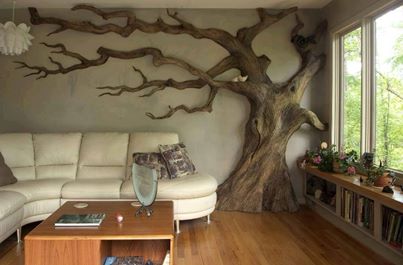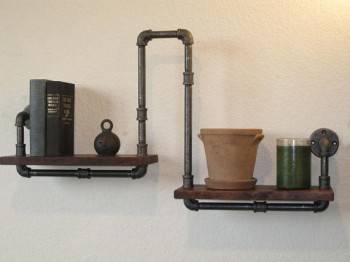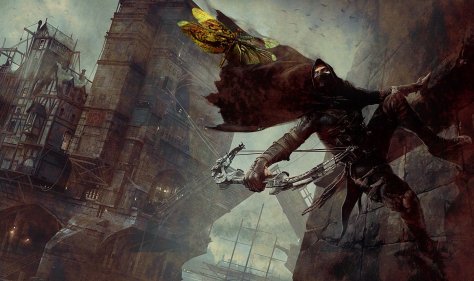Tag Archives: Victorian
Art Styles for Steampunk Game
Working with my Wacom today I found myself doing a whole new style of art. For one thing, I have to learn portraits and people if I am going to do the art for the game. As such, I did several stages of a test male in a Victorian suit and cravat. 
 I have an art style in mind that is somewhere between a slightly cartoonized old photograph and an old sketch. It requires either being able to draw all the right tones in sepia or drawing it all in color and making it sepia, so far I prefer the result of the second. I am beginning to remember more of the material recreation drawing I learned in college taking design. In the Interior design portion of my program we had a couple of classes that required exact recreations of a variety of design and construction materials using colored pencils. The Wacom is a perfect medium for a quicker version of this method. It is a good skill for this project although it can be very time consuming and I am out of practice.
I have an art style in mind that is somewhere between a slightly cartoonized old photograph and an old sketch. It requires either being able to draw all the right tones in sepia or drawing it all in color and making it sepia, so far I prefer the result of the second. I am beginning to remember more of the material recreation drawing I learned in college taking design. In the Interior design portion of my program we had a couple of classes that required exact recreations of a variety of design and construction materials using colored pencils. The Wacom is a perfect medium for a quicker version of this method. It is a good skill for this project although it can be very time consuming and I am out of practice.  I am uncertain what my final art style will be, as I work, I find I like the images in color for the people. I may combine art styles and use different ones in different parts of the game if they blend together. I have been drawing in Photoshop. I tried GIMP but it doesn’t work right with my Wacom and I am not yet clear how to fix the problem. These are drawn only except for the one I made a sepia version of.
I am uncertain what my final art style will be, as I work, I find I like the images in color for the people. I may combine art styles and use different ones in different parts of the game if they blend together. I have been drawing in Photoshop. I tried GIMP but it doesn’t work right with my Wacom and I am not yet clear how to fix the problem. These are drawn only except for the one I made a sepia version of.
Steampunk and Gastronomic Explorations
Today we return to Steampunk in the kitchen. I try to keep a copy of all my books on my computer and more and more purchase and get books in that format to use on the phone, tablet, laptop, and wherever I need them. I have been reorganizing thousands of books and categorizing them into easy to find folders. This involves a lot of reading (something which slows the process immensely as I stop to read and get engrossed, as I am now, in a topic). 
![]()
Molecular gastronomy is a topic that I have been unsure of based on little actual knowledge for some time. Turns out I have quite a bit of information on the topic. The late 17th and 18th century saw the first accessible research in this field and was when the term shows up apparently. Jean-Anthelme Brillat-Savarin’s Physiology of Taste (1825) is one source of information from the period. To quote Albert Sonnenfeld in Molecular Gastronomy (This, 2002/ 2006 p. Preface): “The science of food, which Brillat-Savarin called gastronomy, was initiated earlier by chemists in the Age of Enlightenment, the late seventeenth and eighteenth centuries, and belongs to the history of science. The kitchen was a laboratory like any other for famous doctor and pioneering chemist Antoine-Laurent Lavoisier. In Germany, Justus von Liebig, working in the Age of Positivism, applied meat extracts to the soups that still bear his name. The test tubes were pots and pans.”

howtocookthat.com
First, some definitions of Gastronomy (from Debevoises intro):
Brillat-Savarin called himself “le professeur.” Defining gastronomy as the intelligent knowledge of whatever concerns nourishment, the gourmet professor initiates his readers into a veritable eighteenth-century encyclopedia of natural history, physics, chemistry, cookery, business, and political economy.
Hervé This, our new millennium initiator, is more rigorously focused: Molecular gastronomy deals with culinary transformations and the sensory phenomena associated with eating. As a guide he achieves exemplary clarity for the nonscientist reader, and he is consistently entertaining.
Brillat-Savarin’s classic definition of gastronomy in the Physiology of Taste (1825)… (My formatting):
Gastronomy is the intelligent knowledge of whatever concerns man’s nourishment. Its purpose is to watch over his conservation by suggesting the best possible sustenance for him. It arrives at this goal by directing, according to certain principles, all men who hunt, supply, or prepare whatever can be made into food… .
Gastronomy is a part of:
- Natural history, by its classification of alimentary substances;
- Physics, because of the examination of the composition and quality of these substances;
- Chemistry, by the various analyses and catalyses to which it subjects them;
- Cookery, because of the art of adapting dishes and making them pleasant to the taste;
- Business, by the seeking out of methods of buying as cheaply as possible what is needed, and of selling most advantageously what can be produced for sale;
- Finally, political economy, because of the sources of revenue which gastronomy creates and the means of exchange which it establishes between nations.

All of this eliminates many of the faddish groups and chefs from the gastronomy roles but gives a new understanding of some other chef and bartender works. Living in Las Vegas I was not far from the well known Steampunk lounge there and saw a great deal of the concoctions and interests of the owner that changed my interest in the different terms and their application (we are not looking at the drink related field here). In his analysis of the difference between science and technology he arrives at the first difference in cooking and gastronomy being purpose: gastronomy is for knowledge, cooking is production of goods. Another difference is that gastronomy is science, chemistry and analysis. Cooking is technology, including experimentation, observation, and knowledge but not the same at all. His examples of the connections in the 17 and 1800s between scientific advancement and study of food are worth reading.
Some of the results and studies from that period have to be updated based on new technology and understanding but the foundation is solidly in that period. One must wonder was it science or necessity that brought about the development of many types of foods and uses of many ingredients that would be strange to eat if not commonly recognized as good food. Cookbooks are interesting but serve a gastronomist only in showing methods, ingredients, and apparent affects.

An analysis of them can show regional developments and indirectly reveal the reason varies processes are used and how they developed historically. This can direct you in your experimentation and study and can be fascinating information itself. As an example from my own reading, look at China: Only recently are ovens in use anywhere but the town baker if they had one, thus all the things we would bake are there pan steamed, fried, or cooked in some other method. This changes ingredients, ratios, results, and taste preferences that develop. By the same token if you look in a very cold mountainous region the ingredients are things that grow cold, can be stored, or are very seasonal. Compared to tropical regions where recipes tend to use readily available, fresh ingredients with less concern for storage. We know now that Brillat-Savarin was wrong in his analysis of the process of heat on the water in meat (it expands not compresses), however, his work is important to the fields of cooking and gastronomy. Advancement and understanding do not come without experimentation and study. If you begin research (as many do) knowing your goal and your fact you are proving – then it is not science, it is not research. The difference in that time was that most of these people were seeking understanding and knowledge – they were experimenting to find the fact or understand the apparent result. For us Steampunk followers, knowledge is the beauty; you study to see what happens not to duplicate someone else’s work. We want to know what happens and why. Understanding the history and uses helps this, so cooking and cookbooks are tools in gastronomy as are all the methods of science and lab work.

(one of several home gastronomic kits I saw)
Works Cited
This, Hervé. 2002/ 2006. Molecular Gastronomy: Exploring the Science of Flavor. [ed.] Albert Sonnenfeld. [trans.] M. B. Debevoise. New York : Columbia University Press, 2002/ 2006. excerpts from The Physiology of Taste by Jean Brillat-Savarin, translated by M. F. K. Fisher, copyright 1949 by the George Macy Companies,. isbn 0 -231-13312-x.
The following page struck me as although interesting and gastronomic directed, very much a result of the fad seen today:
Copper Pipe House
I needed a few minutes break while my saw battery charged so I did a picture in GIMP
this is a small house or lounge built into a tube or giant pipe. I have considered doing this myself before, had no way to get the pipe home though.

The floor is copper, used the idea I found the other day of a penny floor.
And found something a minute ago related to the Little Free Libraries I posted before.
This is a Kinetic Sculpture Little Free Library in Minneapolis. Reminds me of the World Fair building.

Another Victorian Steam TARDIS
An Interior Design Project
One of the things I studies in college was Interior Design. I have been considering a couple interior design projects in Steampunk. Today has been very long so I am going to share a few of the ideas I have looked at this week in that area. Many of these are images I got from Secret Garden on Facebook, others from gaming sites. I did not take these photos and did nothing to them, they are property of other artists, I am sharing them as part of developing a foundation for a Steampunk design. Much of it would obviously need to be custom, but then I wanted to consider multiple price ranges and skill levels. I would want to have readily purchasable options, custom options, build-able options, ways to alter accessible or current items, and ways to use different types of spaces. This is obviously not a one day project, but would be a good series.










Fairytail Steampunk
A Bit of Steampunk

I left the tag from the original image at the bottom, don’t want to steal an image. Changed all the materials, added stuff, and generally altered the image. I could have worked another hour, but it is past bedtime. I used this because I love the staircase and the way the bookshelf is integrated really appeals to my Steampunk style and what could be done with it.
Bugs and Thief
I did another Thief dragonfly image today. I am less pleased with today’s piece largely due to a couple glitches in my understanding of the program and the effect actions would have. But this may be me being to harsh on myself, or just me having an idea I didn’t quite meet but no one else knows anyway. I think having Garrett in the image added a dimension and story that quite appealed to me. I wanted to try it without to see some things in scale and perspective, this was where I ran into program issues, purely not knowing how the program worked effectively enough, now I do, so it was a success in that. The image is from Thief 2, and if you know the game, you will see I altered the scene.
Evolving Dragonfly in a Steampunk World

As I said yesterday, today’s piece is an expansion of that image. The background is from Thief, done by Guyjin, I modified it some and made it more gritty and dark. The evolving dragonfly is a modified form of 1/2 the original bug and 1/2 of yesterday’s piece. I just like the many stories this image can tell.



